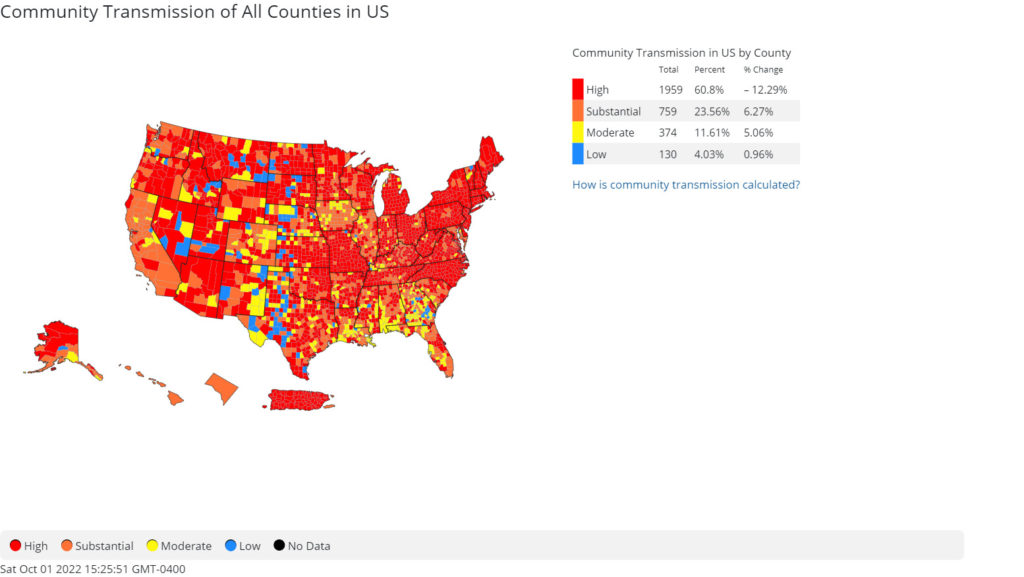
Despite the Centers for Disease Control and Prevention’s loosened masking requirements for nursing homes that were released Sep. 23, many long-term care facilities will not be able to take advantage of them. That’s because they are bound by their respective states’ stricter mask mandates.
And some health experts are just fine with that, believing that it’s too soon to let the guard down where the most vulnerable populations live.
The CDC change was “terrible policy” and “a life-threatening change for at-risk individuals” Jeremy S. Faust, an emergency medicine physician at Brigham and Women’s Hospital in Boston, said in an online essay published last weekend.
The revised guidelines make mask requirements optional for healthcare facilities in areas where community transmission is not labeled “high.” As of Saturday, that applied to just over 39% of the all US counties. But the number of high-transmission counties had dropped 12.29% over the previous seven-day span, according to the CDC.

“We’re in a strange place in the US,” Michael L. Barnett, a health services researcher at the Harvard T.H. Chan School of Public Health told the Globe. “There’s lots of ongoing transmission. [But] there’s a sense at the highest levels of politics that we’re just kind of done with trying really hard.
“It makes even less sense to me to be permissive with nursing homes, which is the most vulnerable place in the pandemic. You could make a better case to relax anywhere except nursing homes.”
LeadingAge, which represents nonprofit nursing homes across the US, released Friday a statement to McKnight’s Long-Term Care News.
“CDC’s updated recommendations, which while still not aligning with recommendations for the general public, do provide greater flexibility for individuals living and working in healthcare settings than previous guidance, and also reflect our advocacy on behalf of members and the autonomous individuals they serve.”



